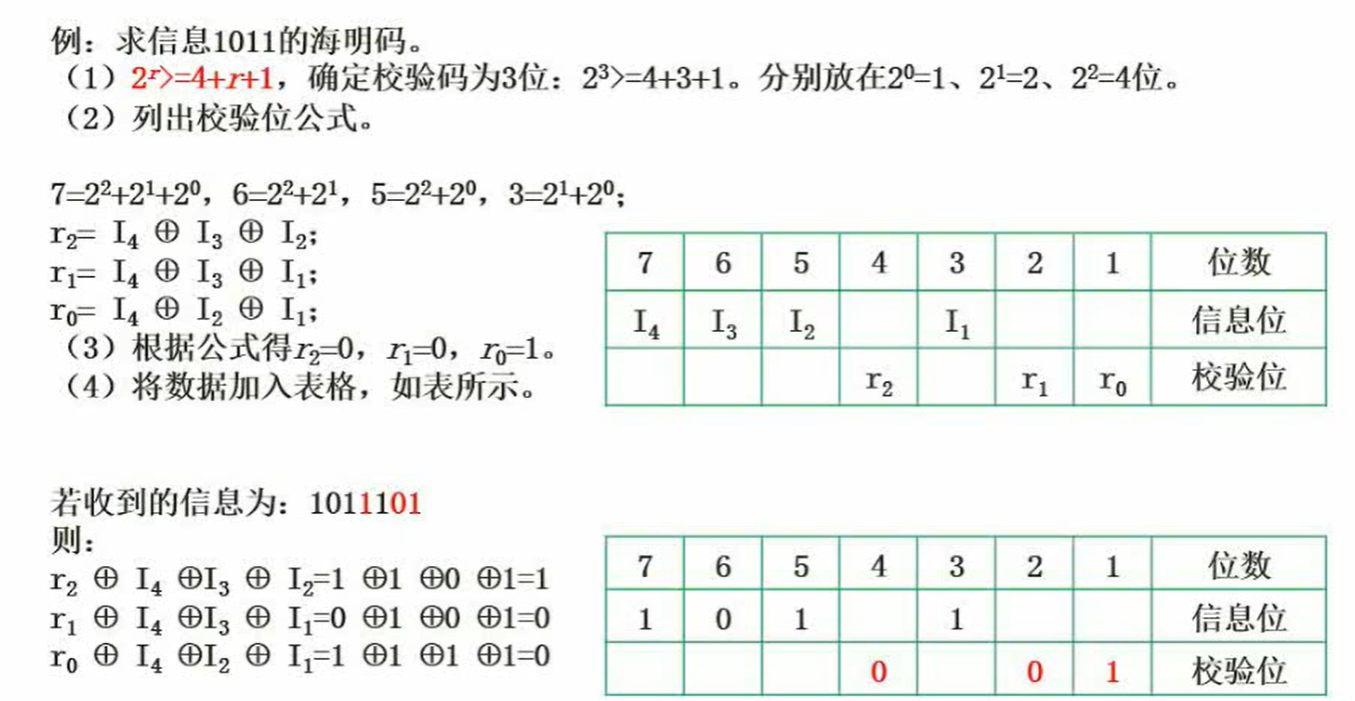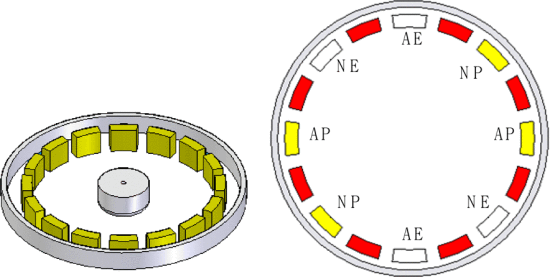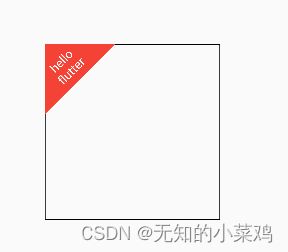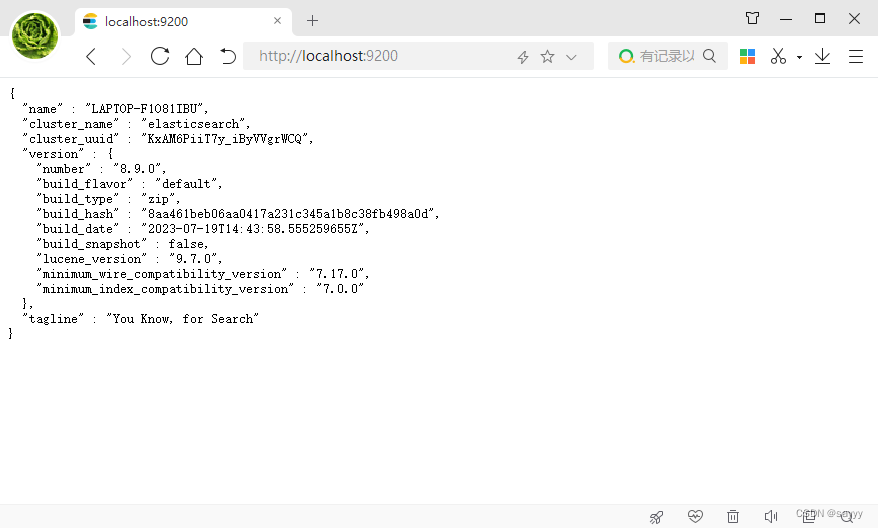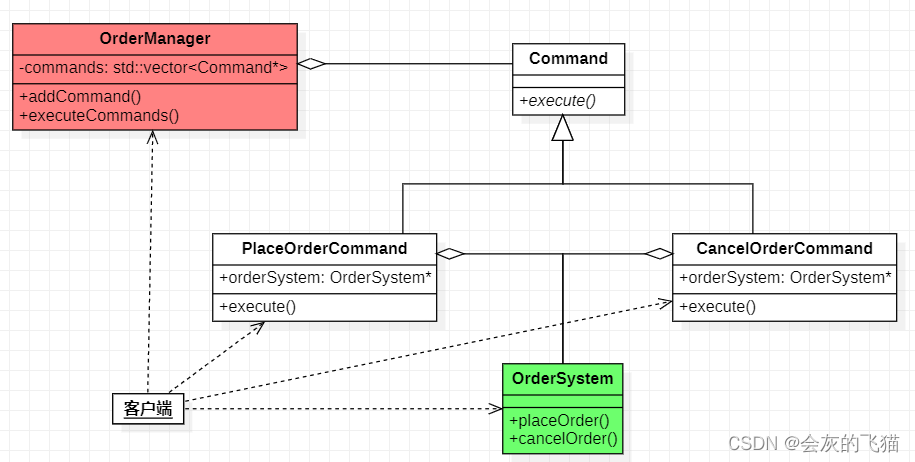目录
一.list的基本结构
二. 接下来就是对list类构造函数的设计了:
三.链表数据的增加:
四.接下来就是迭代器的创建了:
四.简单函数的实现:
五.构造与析构
六.拷贝构造和赋值重载
传统写法:
现代写法:
七.迭代器模板类型
一.list的基本结构
想要模拟实现list类,就需要先了解它的底层架构,上篇博客讲到:list容器的底层是双向链表,那么就需要自定义一个节点类,通过节点类可以创建节点,设置节点的前后指针和数据值。之后便可以通过该类类型创建list类的成员变量。
template<class T>
struct list_node { //该类为内部类,是list的内部类
list_node(const T& val)
:_next(nullptr)
, _prev(nullptr)
, _data(val) {
}
//成员变量
list_node* _next; //后指针
list_node* _prev; //前指针
T _data; //值
};
template<class T>
class list {
public:
typedef list_node<T> node; //将节点类作为类类型
private:
node* _head; //指向堆区空间链表的指针
size_t _size; //计数
};
node* 类型就好比是对节点类的封装。
二. 接下来就是对list类构造函数的设计了:
template<class T>
class list {
public:
typedef list_node<T> node; //将节点类作为类类型
//初始化操作
void empty_Init() {
_head = new node(T());
_head->_next = _head;
_head->_prev = _head;
_size = 0;
}
list() //构造函数
:_head(nullptr)
,_size(0){
empty_Init();
}
private:
node* _head; //指向堆区空间链表的指针
size_t _size; //计数
};对构造函数的初始化设计就是:创建哨兵位头结点,让链表指针指向哨兵位头结点,由哨兵头节点去控制节点的增删查改,避免了由链表指针去控制,操作和形式上都方便了很多。
注:哨兵位头结点的创建是在empty_Init()函数中进行的!
三.链表数据的增加:
template<class T>
class list{
public:
typedef Node<T> node;
//尾插
void push_back(const T& val) {
node* newnode = new node(val);
node* tail = _head->_prev;
tail->_next = newnode;
newnode->_prev = tail;
newnode->_next = _head;
_head->_prev = newnode;
++_size;
}
//尾删
void pop_back() {
assert(!empty());
node* tail = _head->_prev;
node* last = tail->_prev;
last->_next = _head;
_head->_prev = last;
delete tail;
--_size;
}
//头插
void push_front(const T& val) {
node* newnode = new node(val);
node* first = _head->_next;
_head->_next = newnode;
newnode->_prev = _head->_next;
newnode->_next = first;
first->_prev = newnode;
++_size;
}
//头删
void pop_front() {
assert(!empty());
node* first = _head->_next;
node* second = first->_next;
_head->_next = second;
second->_prev = _head->_next;
delete first;
--_size;
}
//任意位置的插入
iterator insert(iterator pos, const T& val=T()) {
if (pos == this->begin()) {
push_front(val); //复用代码
}
else if (pos == this->end()) {
push_back(val); //复用代码
}
else {
node* newnode = new node(val);
node* cur = pos.phead;
node* last = cur->_prev;
last->_next = newnode;
newnode->_prev = last;
newnode->_next = cur;
cur->_prev = newnode;
++_size;
}
return pos;
}
//任意位置的删除
iterator erase(iterator pos) {
assert(!empty());
if (pos == this->begin()) {
pop_front();
}
else if (pos == this->end()) {
pop_back();
}
else {
node* cur = pos.phead;
node* tail = cur->_next;
node* last = cur->_prev;
last->_next = tail;
tail->_prev = last;
delete cur;
--_size;
}
return pos;
}
private:
node* _head; //指向堆区空间链表的指针
size_t _size; //计数
};对于数据的增加和删除,头插头删、尾插尾删简单就不说了,重点是insert和erase函数的实现,如上代码,在insert和erase中,各有三种情况,其中头尾的操作直接复用函数即可,对于中间位置的插入删除情况,我想说的是,指定的pos参数是iterator类型——自定义迭代器类,它是指针!!! 它只是指向该节点元素的位置,所以想要获取该位置的节点,就需要pos.phead才能获取到该节点,只有获取到该节点,才能使用该节点附近的前后指针!
四.接下来就是迭代器的创建了:
在对vector、String容器的模拟实现中,我并没有单独创建迭代器,这是因为这两个容器的底层都是数组,是一段连续的地址空间,对于迭代器中的成员begin、end都是可以直接让指针进行类型的字节++/--进行的,很方便的,是使用原生指针来确定位置
而对于list容器来说,它的底层是链表,各个节点的位置是不连续的,随机的。使用原生指针并不能遍历到每一个对象的元素!所以针对list容器,需要创建一个自定义类型的迭代器进行链表的遍历。
template<class T>
struct list_iterator
{
typedef list_node<T> node;
node* _pnode; //成员变量
list_iterator(node* p) //构造函数
:_pnode(p){}
T& operator*(){ //指针解引用
return _pnode->_data;
}
list_iterator<T>& operator++(){ //指针++
_pnode = _pnode->_next;
return *this;
}
bool operator!=(const list_iterator<T>& it){ //!=运算符重载
return _pnode != it._pnode;
}
};
template<class T>
class list{
public:
typedef list_node<T> node;
typedef list_iterator<T> iterator;
iterator begin(){
return iterator(_head->_next);
}
iterator end(){
//iterator it(_head);
//return it;
return iterator(_head);
}
};
在自定义的迭代器类中,我根据平常练习vector、String的迭代器代码中,写了几个一定会用到的运算符重载函数:解引用、指针++,遍历所用到的!=等函数。
写好自定义迭代器类后,需要在list类中重命名该类。
写好迭代器后,我们就可以试验一下了:
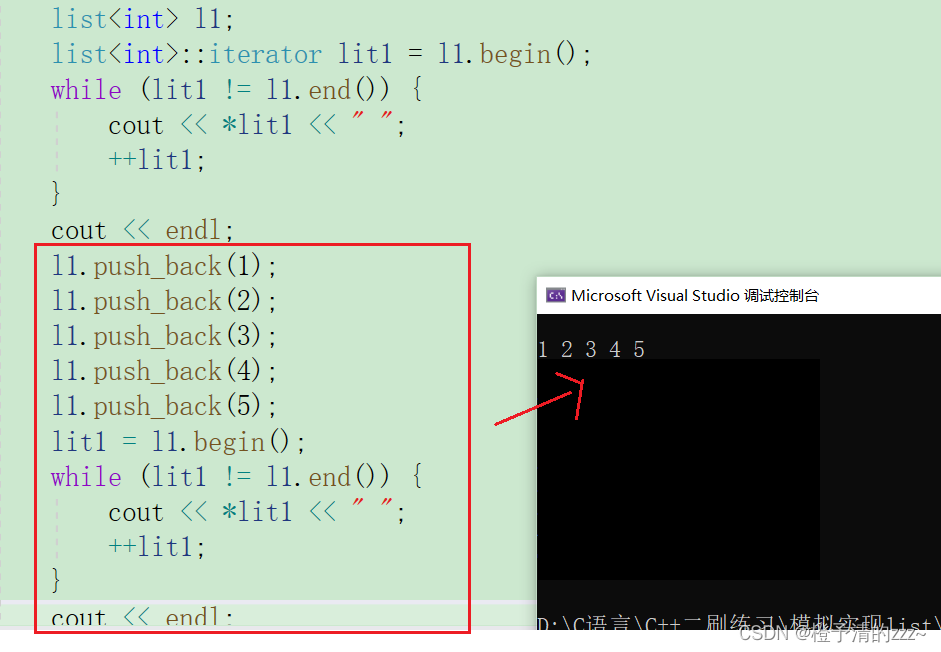
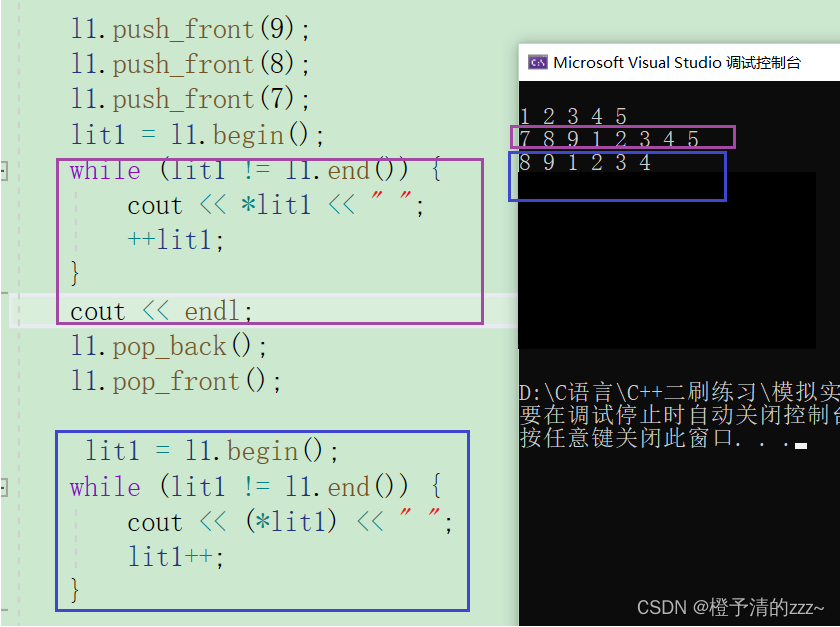
注:上面的迭代器只是普通迭代器的实现,还会有const迭代器、反向迭代器需要实现,意味着还得再写两个迭代器类。
四.简单函数的实现:
template<class T>
class list{
public:
size_t size()const {
return _size;
//方法2:利用指针遍历,每遍历一次记一次数
}
bool empty() const {
//方法1:
return _size == 0;
//方法2:return _head->next==_head;
}
void clear() {
node* cur = _head->_next;
while (cur != _head) {
node* del = cur;
cur = cur->_next;
delete del;
}
cur->_next = _head;
cur->_prev = _head;
_size = 0;
}
T& front() {
return this->begin().phead->_data;
}
T& back() {
return this->end().phead->_prev->_data;
}
private:
node* _head;
size_t _size;
};
五.构造与析构
有了迭代器,我们就可以对list构造函数进行迭代器区间构造实现了:
template<class T>
class list{
public:
//迭代器区间构造函数
template<class Inputiterator>
list(Inputiterator first, Inputiterator last) {
empty_Init();
while (first != last) {
push_back(*first);
++first;
}
}
void empty_Init() {
_head = new node(T());
_head->_next = _head;
_head->_prev = _head;
_size = 0;
}
list() //无参构造
{
empty_Init();
}
//析构函数
~list() {
this->clear();
delete _head;
_head = nullptr;
_size = 0;
}
private:
node* _head;
size_t _size;
};析构函数就是遍历链表中每个节点都进行遍历释放,置空指针,置零变量。
六.拷贝构造和赋值重载
传统写法:
//拷贝构造——传统写法
list(const list<T>& lt) {
empty_Init();
for (auto& e : lt) {
this->push_back(e);
}
}
//赋值重载函数——传统写法
list<T>& operator=(const list<T>& lt) {
if (this != <) {
this->clear();
}
for (const auto& e : lt) {
this->push_back(e);
}
return *this;
}拷贝构造和赋值重载本质上都相同,都是复制已有的list对象,然后深拷贝数据给自己。深拷贝就是创建一个属于自己的头结点,剩下的数据就是浅拷贝(无脑将数据以遍历的方式让自己的头指针进行指针链接)。
现代写法:
//调用std库中swap函数进行成员交换
void Swap(list<T>& lt) {
std::swap(this->_head, lt._head);
std::swap(this->_size, lt._size);
}
//拷贝构造——现代写法
list(const list<T>& lt) {
empty_Init();
list<T> tmp(lt.begin(), lt.end()); //调用迭代器区间构造函数
this->Swap(tmp);
}
//赋值重载——现代写法
list<T>& operator=(list<T> lt) {
this->Swap(lt); //值传递,形参的改变不影响实参
return *this;
}
七.迭代器模板类型
上面讲迭代器的最后说了,迭代器有普通版、const版、反向版、反向const版,意味着我们需要创建四个迭代器类型,但迭代器能用到的运算符重载函数都一样,都是解引用、指针++、!=运算符。
//自定义普通迭代器类
template<class T>
struct list_iterator{
typedef list_node<T> node;
node* _pnode;
list_iterator(node* p)
:_pnode(p){}
T& operator*(){
return _pnode->_data;
}
list_iterator<T>& operator++(){
_pnode = _pnode->_next;
return *this;
}
list_iterator<T>& operator--(){
_pnode = _pnode->_prev;
return *this;
}
bool operator!=(const list_iterator<T>& it){
return _pnode != it._pnode;
}
};
//const迭代器类
template<class T>
struct list_const_iterator{
typedef list_node<T> node;
node* _pnode;
list_const_iterator(node* p)
:_pnode(p){}
const T& operator*(){
return _pnode->_data;
}
list_const_iterator<T>& operator++(){
_pnode = _pnode->_next;
return *this;
}
list_const_iterator<T>& operator--(){
_pnode = _pnode->_prev;
return *this;
}
bool operator!=(const list_const_iterator<T>& it){
return _pnode != it._pnode;
}
};
template<class T>
class list{
typedef list_node<T> node;
public:
typedef list_iterator<T> iterator;
typedef list_const_iterator<T> const_iterator;
const_iterator begin() const{
return const_iterator(_head->_next);
}
const_iterator end() const{
return const_iterator(_head);
}
iterator begin(){
return iterator(_head->_next);
}
iterator end(){
return iterator(_head);
}如上,普通迭代器类和const迭代器类唯一的区别:是在遍历上,const迭代器类的解引用运算符重载函数中不能用*it修改数据,那么这俩迭代器类中其他函数的实现完全一样,这极大的造成了代码的冗余,降低了可读性!!!
于是为了在一种迭代器类中体现不同类型的迭代器,可以这样做:
template<class T, class Ref, class Ptr>
struct _list_iterator {
typedef list_node<T> node;
typedef _list_iterator<T, Ref,Ptr> Self; //Self是T与ref,ptr 模板类型的另一种别称
//迭代器构造函数
_list_iterator(node* p)
:_pnode(p) {}
//解引用
Ref operator*() {
return _pnode->_data;
}
//箭头只有是结构体才可以用
Ptr operator->() {
return &_pnode->_data; //返回的是该结点的地址
}
Self& operator++() {
_pnode = _pnode->_next;
return *this;
}
//后置++,使用占位符int,与前置++以示区分
Self operator++(int) {
Self tmp(*this);
_pnode = _pnode->_next;
return tmp;
}
//前置--
Self& operator--() {
_pnode = _pnode->_prev;
return *this;
}
//后置--
Self operator--(int) {
Self tmp(*this);
_pnode = _pnode->_prev;
return tmp;
}
bool operator!=(const Self& lt) const {
return _pnode != lt._pnode;
}
bool operator==(const Self& lt) const{
return _pnode == lt._pnode;
}
node* _pnode;
};
在迭代器类中,采用了三个模板参数。这三个模板参数:T代表泛型值,Ref代表泛型引用,Ptr代表泛型指针,这三种参数主要应用于运算符重载函数的函数返回值,函数形参,相当方便,一举多得,通过不同实参的传递就可以调用不同类型的函数。
template<class T>
class list {
public:
typedef list_node<T> node;
typedef _list_iterator<T, T&, T*> iterator;
//typedef list_const_iterator<T> const_iterator;
typedef _list_iterator<T, const T&, const T*> const_iterator;完整模拟实现代码 .h文件:
#include<iostream>
#include<assert.h>
using std::cout;
using std::endl;
template<class T>
struct list_node { //该类为内部类,是list的内部类
list_node(const T& val)
:_next(nullptr)
, _prev(nullptr)
, _data(val) {
}
//成员变量
list_node* _next;
list_node* _prev;
T _data;
};
//typedef list_iterator<T, T&> iterator;
//typedef list_iterator<T, const T&> const_iterator;
//这种写法来源:vector<int>,vector<string>,vector<vector<int>>
template<class T, class Ref, class Ptr> //新增一个模板参数 ,T是一种类型,ref是一种类型
struct list_iterator {
typedef list_node<T> node;
typedef list_iterator<T, Ref, Ptr> Self; //Self是T与ref,ptr 模板类型的另一种别称
//迭代器构造函数
list_iterator(node* p)
:_pnode(p) {}
//在下面的运算符重载中,const版与非const版只有解引用运算符重载函数的类型不同,其他运算符重载都一样
//所以operator* 的类型需要使用ref,ref可以理解为constT&, 而非const对象也可以调用const函数,权限够
//const对象不可调用非const函数,权限不够,所以使用ref
//解引用
Ref operator*() {
return _pnode->_data;
}
//箭头只有是结构体才可以用
Ptr operator->() {
return &_pnode->_data; //返回的是该结点的地址
}
//前置++,
//为啥要用引用? 原因:return *this ,this(迭代器对象)出了该函数体,还存在(this的生命周期在该类中是全局的)
Self& operator++() {
_pnode = _pnode->_next;
return *this;
//既然this还在,那么直接用引用返回,栈帧中不开临时空间,减少拷贝次数,提高效率
//记住:使用引用返回的前提是,要返回的值出了函数体仍在才可以使用,否则会报错
}
//后置++,使用占位符int,与前置++以示区分
Self operator++(int) {
Self tmp(*this);
_pnode = _pnode->_next;
return tmp;
//返回tmp后,tmp为临时对象,出了函数就消失了,tmp对象不在,需要拷贝,那就得用传值返回,在栈帧中
//创建一个临时空间去接收返回的tmp对象数据。设置一个默认参数和前置++做区分,构成函数重载。
//若使用引用返回,那么该函数结束后,返回的tmp已经不存在了,引用返回返回野指针(随机值)就会报错!!!
}
Self& operator--() {
_pnode = _pnode->_prev;
return *this;
}
//后置--
Self operator--(int) {
Self tmp(*this);
_pnode = _pnode->_prev;
return tmp;
}
bool operator!=(const Self& lt) const {
return _pnode != lt._pnode;
}
bool operator==(const Self& lt) const{
return _pnode == lt._pnode;
}
node* _pnode;
};
//--------------------------------------------------------------------------------
template<class T>
class list {
public:
typedef list_node<T> node;
typedef list_iterator<T, T&, T*> iterator;
typedef list_iterator<T, const T&, const T*> const_iterator;
void empty_Init() {
_head = new node(T());
_head->_next = _head;
_head->_prev = _head;
_size = 0;
}
list(){
empty_Init();
}
//析构
~list() {
this->clear();
delete _head;
_head = nullptr;
_size = 0;
}
template<class Inputiterator>
list(Inputiterator first, Inputiterator last) { //拷贝构造的天选打工人
//先初始化,给头节点,否则没法继续
empty_Init();
while (first != last) {
push_back(*first);
++first;
}
}
void swap(list<T>& lt) {
std::swap(this->_head, lt._head);
std::swap(this->_size, lt._size);
}
void clear() {
iterator it = this->begin();
while (it != this->end()) {
it = this->erase(it);
}
}
//拷贝构造——传统写法
/*list(const list<T>& lt) {
empty_Init();
for (auto& e : lt) {
this->push_back(e);
}
}*/
//拷贝构造——现代写法
list(const list<T>& lt) {
empty_Init();
list<T> tmp(lt.begin(), lt.end()); //调用迭代器区间构造函数
this->swap(tmp);
}
//赋值重载——传统写法
/*list<T>& operator=(const list<T>& lt) {
if (this != <) {
this->clear();
}
for (const auto& e : lt) {
this->push_back(e);
}
return *this;
}*/
//赋值重载——现代写法
list<T>& operator=(list<T> lt) {
this->swap(lt);
return *this;
}
//迭代器
iterator begin() {
return iterator(_head->_next);
}
iterator end() {
return iterator(_head);
}
//const迭代器
const_iterator begin() const {
return const_iterator(_head->_next);
}
const_iterator end() const {
return const_iterator(_head);
}
//尾插
void push_back(const T& val) {
node* newnode = new node(T(val));
node* tail = _head->_prev;
tail->_next = newnode;
newnode->_prev = tail;
newnode->_next = _head;
_head->_prev = newnode;
}
//insert
iterator insert(iterator pos, const T& val) {
node* newnode = new node(T(val));
node* cur = pos._pnode;
node* first = cur->_prev;
first->_next = newnode;
newnode->_prev = first;
newnode->_next = cur;
cur->_prev = newnode;
_size++;
//insert后返回新节点的位置,那么下一次pos就会指向最近一次创建新节点的位置了
return iterator(newnode);
}
iterator erase(iterator pos) {
//pos不能指向哨兵位头节点,因为pos一旦指向哨兵位头,那么该链表一定为空,空链表是不能再删数据的
assert(pos != end());
node* first = pos._pnode->_prev;
node* last = pos._pnode->_next;
first->_next = last;
last->_prev = first;
delete pos._pnode;
pos._pnode = nullptr;
--_size;
return iterator(last);
}
void push_front(const T& val) {
insert(begin(), val);
}
void pop_back() {
erase(--end());
}
void pop_front() {
erase(begin());
}
size_t size() const{
/*size_t s = 0;
iterator it = this->begin();
while (it != this->end()) {
++it;
++s;
}
return s;*/
//复用insert和erase
//因为在链表中,一切的新增和减少都是复用的insert和erase,所以在insert和erase中size++,size--即可
return _size;
}
bool empty() const {
//return _head->_next == _head;
//也可以复用size()
return _size == 0;
}
private:
node* _head; //头节点
size_t _size;
};
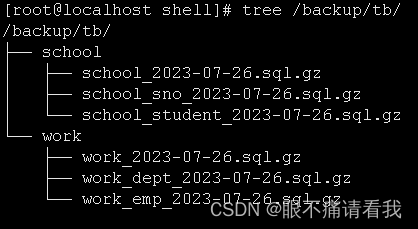
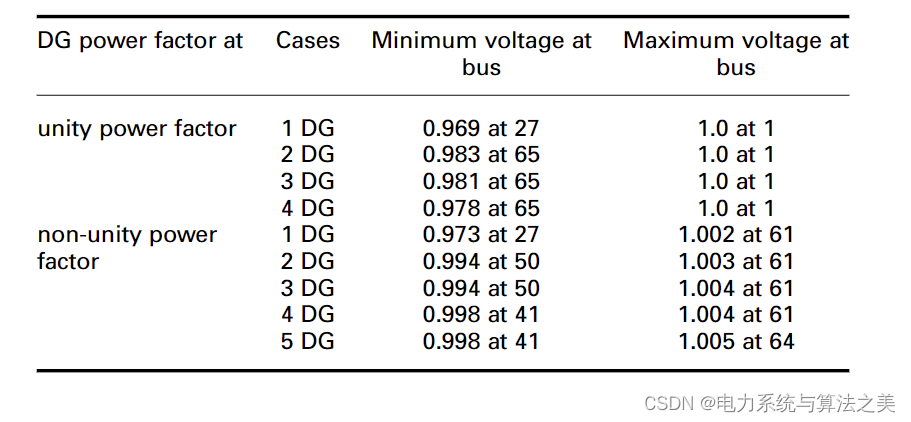

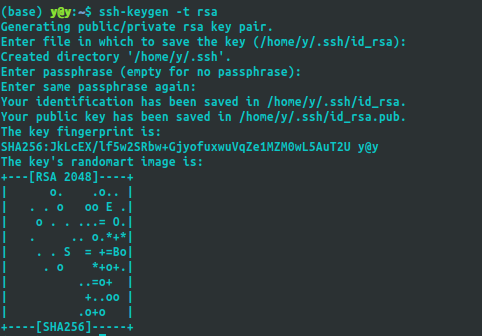

![[JavaWeb]MySQL的安装与介绍](https://img-blog.csdnimg.cn/18521df59daa490ba3133746a11d0499.png#pic_center)


